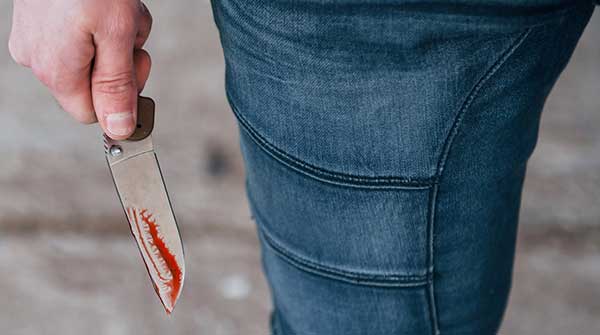Until Indigenous men are held to the same standards as everyone else, nothing will change
 Jeremy Skibicki has been charged with the murder of four Indigenous women in Winnipeg, Manitoba. If proven, this is a truly horrible crime that deserves the public’s full attention and a demand that justice be done. That is happening. There is an unprecedented level of outrage from all quarters, and an outcry for redress.
Jeremy Skibicki has been charged with the murder of four Indigenous women in Winnipeg, Manitoba. If proven, this is a truly horrible crime that deserves the public’s full attention and a demand that justice be done. That is happening. There is an unprecedented level of outrage from all quarters, and an outcry for redress.
The case highlights the obvious fact that Indigenous women are at much greater risk of being abused and murdered than their non-Indigenous counterparts. This is recognized by every clear-thinking Canadian as a societal wrong that must be corrected.
But there is something odd about the outrage seen in the Skibicki case. It is selective. Outrage and demand for change only appear to occur where the alleged perpetrator is non-Indigenous. Indigenous women are abused and murdered by Indigenous men every day of the week. And it doesn’t seem to matter. It is simply not noticed.
 |
| Related Stories |
| It’s too easy to blame Christianity for residential school deaths
|
| One Indigenous inquiry after another proves fruitless
|
| Missing women, evil men: inquiry must examine both
|
Only when the victims are Indigenous and the perpetrator non-Indigenous does it become a matter of public concern. If both the victims and perpetrator are Indigenous, it is stoically and silently accepted as a fact of life by both the Indigenous and non-Indigenous communities. Simply put, there is no outrage.
Why is this so?
An example of this comparative lack of outrage is the recent mass slaughter in Saskatchewan. On Sept 4, 2022, Miles Sanderson murdered 11 women and men by stabbing them to death and injured 18 others in what was easily the worst mass murder in Saskatchewan’s history. This horrific crime took many more lives than did the Skibicki case, and was certainly every bit as gruesome. But although there was extensive media coverage while the police investigation was ongoing, once the facts were known – that was it. The case was over. Everyone went back to their daily lives. No outrage.
In fact, some newspaper articles written about the mass killing even bizarrely tried to excuse the killer by blaming his behaviour on “systemic racism,” “the history of residential schools,” or the old canard “colonialism.” There appeared to be none of the white-hot vitriol directed against the Winnipeg alleged killer or the police, justice system or other institutions that is now playing out in Winnipeg.
What is going on here? Why do there appear to be completely different standards depending on whether the perpetrator is Indigenous or non-Indigenous?
One can only imagine the explosion of outrage that would have followed if Miles Sanderson had been non-Indigenous. His crime involved 10 times as many people, and one can only assume that the outrage level would be 10 times as high.
Alternatively, what if it came to pass that the Winnipeg suspect is actually Indigenous? Would the outrage level continue at the same white-hot level?
History tells us that it would not. Because the Sanderson case is only a particularly sensational example of gruesome abuse and murder cases involving Indigenous women and Indigenous perpetrators that are routinely reported in our daily newspapers. And accepted in silence.
The facts are clear. The great majority of Indigenous women who are abused or murdered are victims of Indigenous men. Cases like Robert Picton or Jeremy Skibicki are the exception, not the norm.
The grim reality that the abuse of Indigenous women is only noticed if the perpetrator happens to be non-Indigenous is a profoundly troubling sign for our society. The fact that Indigenous leaders and writers ignore this is particularly troubling. And when those people give excuses to the Indigenous abusers – such as the usual laundry list of “systemic racism, residential schools, colonialism” – it makes the situation hopeless. The abuse will continue.
But it gets worse.
Even our Justice system encourages the diminished level of responsibility expected of Indigenous men for their criminal behaviour. From Gladue sentencing, to lighter sentences, easier release, and shockingly lax parole requirements for Indigenous men, the message to them is clear: “You are excused for your behaviour because you are Indigenous.” This is a virtual licence granted to Indigenous men to continue abusing.
Until the abuse of Indigenous women is recognized as being equally reprehensible regardless of the perpetrator’s ethnicity – until the Indigenous community accepts ownership of their very real female abuse problem – nothing will change.
The Winnipeg case is truly horrific. If proven, the perpetrator must be punished to the fullest extent of the law.
But such cases must not be allowed to divert our attention from the very real problem that too many Indigenous men abuse too many Indigenous women.
Until Indigenous men are held to the same standards as everyone else, nothing will change.
Brian Giesbrecht is a retired judge and a senior fellow with the Frontier Centre for Public Policy.
For interview requests, click here.
The opinions expressed by our columnists and contributors are theirs alone and do not inherently or expressly reflect the views of our publication.
© Troy Media
Troy Media is an editorial content provider to media outlets and its own hosted community news outlets across Canada.
